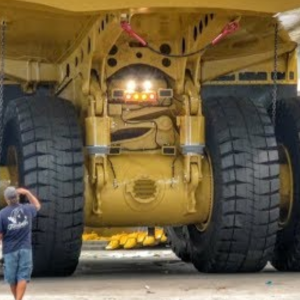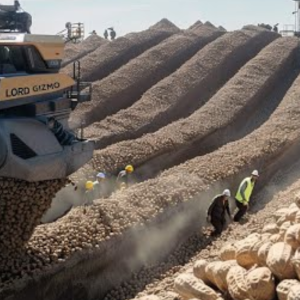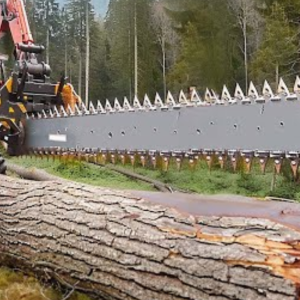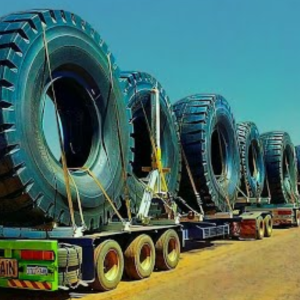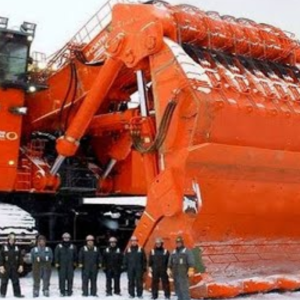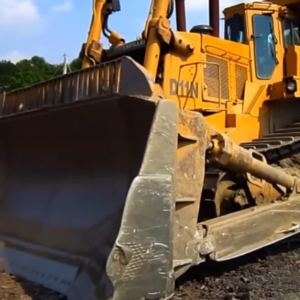
In the ’50s, every U.S. car manufacturer needed an overhead-valve V8 just to stay in the game, and in 1956 American Motors stepped up to the plate.

When American Motors was founded with the merger of Hudson and Nash on May.1, 1954, the newly forged automaker wasn’t planning to produce its own V8 engines. Instead, arrangements were made with Studebaker-Packard to supply 320 cubic-inch Packard V8s to AMC starting with the 1955 model year. But as the shaky partnership between the two independent carmakers quickly fell apart, AMC launched a crash program to design its own overhead-valve V8, taking the project from the drawing board to production line in less than 18 months.
A key engineer on the project was David B. Potter, formerly of Continental and Kaiser-Frazer, aided by an entire crew of AMC personnel, including Len Bailey, later a key player in the Ford GT program, and Floyd Kishline, who developed the Graham supercharger. Working under engineering VP Meade Moore, they created a conservative but robust V8 with a deep-skirted cast-iron block and a forged, five-main bearing crankshaft with six counterweights. While the bore spacing was a generous 4.75 inches, the AMC was reasonably compact and light (for its time, anyway) at 661 lbs.

While the cast-iron cylinder heads and overhead-valve layout were standard Motor City practice for the ’50s, the combustion chambers had a remarkably contemporary look with large squish zones and .040 inches of quench at TDC. The spark plugs stood nearly vertical for convenient access, but the valve diameters were modest: 1.787-in intake and 1.406 in exhaust, no doubt limiting the engine’s ultimate potential.
For the 1956 launch, the AMC V8 featured a bore and stroke of 3.50 by 3.25 inches, yielding a displacement of 250 cubic inches. With a compression ratio of 8:1 and a Carter two-barrel carburetor, the rated output was 190 hp at 4,900 rpm on regular fuel. Dual exhausts were standard, interestingly enough.
For 1957, the final year for the Nash and Hudson brands at AMC, the V8’s bore was opened up a full half-inch to 4.00 inches, producing a displacement of 327 cubic inches. With the addition of a four-barrel carb and a boost in compression to 9:1, the ’57 V8 was good for 255 hp at 4,700 hp, giving the legacy brands a respectable sendoff.
All told, AMC’s first-generation V8 was produced in three displacements: 250 CID in 1956-61, 327 CID in 1957-66, and 287 CID in 1963-66. (While the Rambler and Chevrolet 327 V8s happen to share the same bore, stroke, and displacements, they are otherwise unrelated.) The hydraulic-lifter, two-barrel-only 287 was introduced in mid-’63 to fill a gap in the engine lineup created when the 250 was dropped.

For 1957, AMC originally planned to offer Bendix Electrojector electronic fuel injection on the high-performance Rambler Rebel’s 327 CID V8 and widely promoted the feature at the New York Auto Show and elsewhere (above). A handful of engineering prototypes using the analog EFI system were built and tested, but at the very last moment the project was canceled, reportedly due to reliability problems. The production Rambler Rebels all sported four-barrel carbs. (See our Rebel feature here.)
Aside from the Rebel and the aborted Bendix EFI program, American Motors never showed any interest in racing or the performance market in this period, and in the racing and hot rodding communities the feeling appeared to be mutual. First-gen AMC V8s in racing were rare indeed, and speed equipment was close to non-existent.
Still, the Rambler V8 was used to good effect in ’65-’67 full-sized Kaiser Jeeps, where it was branded as the Vigilante V8, and the popular Gray Marine Fireball V8 was also AMC-based. For 1967, American Motors completely modernized its first-gen V8, and while the new engine shared the original’s basic architecture and 4.75-in bore centers so it could be produced with the same machine tools, otherwise they are rather different engines.

